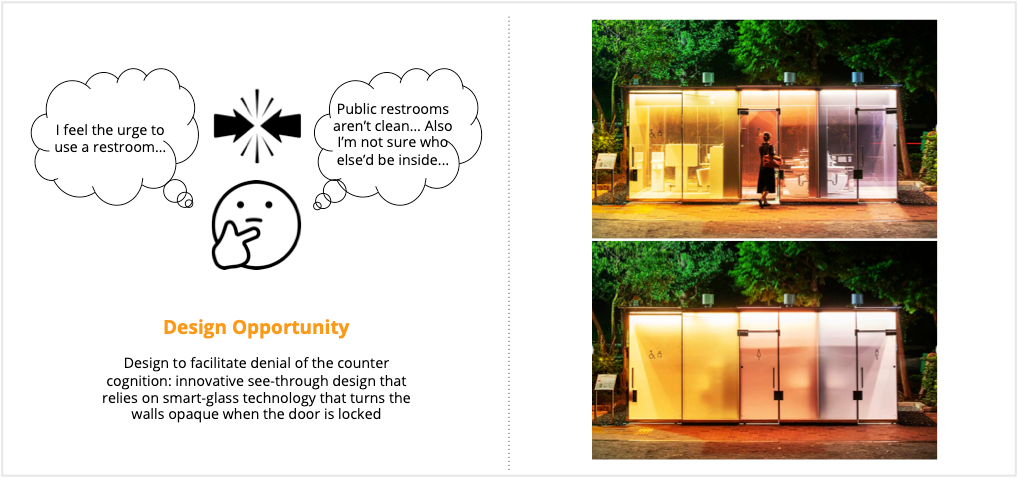Design & Dissonance
- Why is it so hard for us to let go of our beliefs or behaviours?
- Why is it so hard for us to accept divergent perspectives; or adopt beliefs or behaviours contrary to the preexisting ones?
A lot of it has to do with the way our brain deals with the experience of cognitive dissonance.
When we hold two or more conflicting beliefs or attitudes or ideas (“cognitions”); or act or behave against either of these, we experience “cognitive dissonance”. It is what we experience when we lie in spite of believing that we shouldn’t; or when we smoke while knowing that it is injurious to health; or when we cheat while we are on diet; or when we confront a discordant point of view on social media.
Far from being pleasant, the experience is characterised by mental stress and uncomfortable feelings. Stress levels are especially higher when our cognitions/ behaviour go against our self-concept.

Processing dissonant cognitions thoroughly, and thereby affecting a change to our beliefs or values or behaviour requires the brain to expend a lot of energy. Our brain, however, has evolved to conserve energy: a well-learnt survival strategy. And so, it typically employs either of the following more energy-efficient tactics to reduce dissonance as quickly as possible:
- denial/ ignorance of the counter cognition/ behaviour
- trivialisation of the counter cognition/ behaviour
- justification of the previously held cognition/ behaviour by modifying the counter cognition/ behaviour
- justification of the previously held cognition/ behaviour by adding new consonant cognitions/ behaviours

Having said that, a change of beliefs or behaviour in line with counter cognition is also possible- but it needs the counter cognition to be powerful enough to overcome the brain’s attempts at denial, trivialisation, or justification. It explains why it is hard for us to let go of our beliefs or behaviours; or adopt beliefs or behaviours contrary to the preexisting ones. It explains why we more likely tend to indulge in whataboutery, trolling, and assigning motives when confronted with accusations or uncomforting questions instead of rationalising or reflecting over them.

It also explains why the more radical, paradigm shifting ideas often get ignored, mocked, and repudiated for long before gaining wider acceptance: why Copernican Heliocentrism was condemned as heretical for centuries after it was first proposed; or why racial/ caste justice and marriage equality still remain a distant dream for large populations globally.

Our brain’s preferred/ default way of dealing with cognitive dissonance is thus a big impediment to our learning new behaviours, appreciating diverse ideas, and bettering our way of life. It pushes us deeper down the abyss of our echo chambers, making our behaviour increasingly vulnerable to manipulation- as partners, citizens, consumers, and voters. And with highly sophisticated AI powering predictive analytics and further hyper targeting of individuals in the future, one can only imagine the damage this can do to us as individuals and societies!
But here’s the good part- awareness of cognitive dissonance and understanding how our brain deals with it can also be leveraged in design to positively alter life experience. It can help us design frictionless, delightful customer journeys by identifying and designing for specific high anxiety milestones: both pre- and post- purchase. It can help us create seamless brand experiences by devising brand- positive affirmations across key touchpoints.

It can help us design great employee experiences by identifying and designing for specific high anxiety processes: from induction to appraisal to separation. It can help us facilitate more productive brainstorming sessions and meetings; and better appreciate genuine constructive feedback from others. Even at a personal level, it can help us stay the course in keeping with our new year’s resolutions; and cope with addiction, anxiety, and depression better.

Applications of it could extend to the social domain as well. Tokyo’s latest attraction- the transparent public restrooms installed by Shigeru Ban Architects in its Shibuya district- are a great example of this. These restrooms, through their counter-intuitive design strike directly at the dark, dirty, smelly and scary stereotype of public toilets in people’s minds; and encourage them to access these without feeling uncomfortable.

On similar lines, we could also design to encourage more people to wear masks and maintain social distancing during a pandemic; or to adhere to traffic safety rules while driving. We could design policies to get more people to pay their taxes; or to get more people to transition to a cleaner, greener, more sustainable lifestyle.
The possibilities are endless and for all to pursue!
(This piece was written by Sanket Shah. In his role as a Strategist at Lokusdesign, he works at the crossroads of Design Thinking & Brand Strategy to create valuable brands in the midst of complexity of business environment.)

